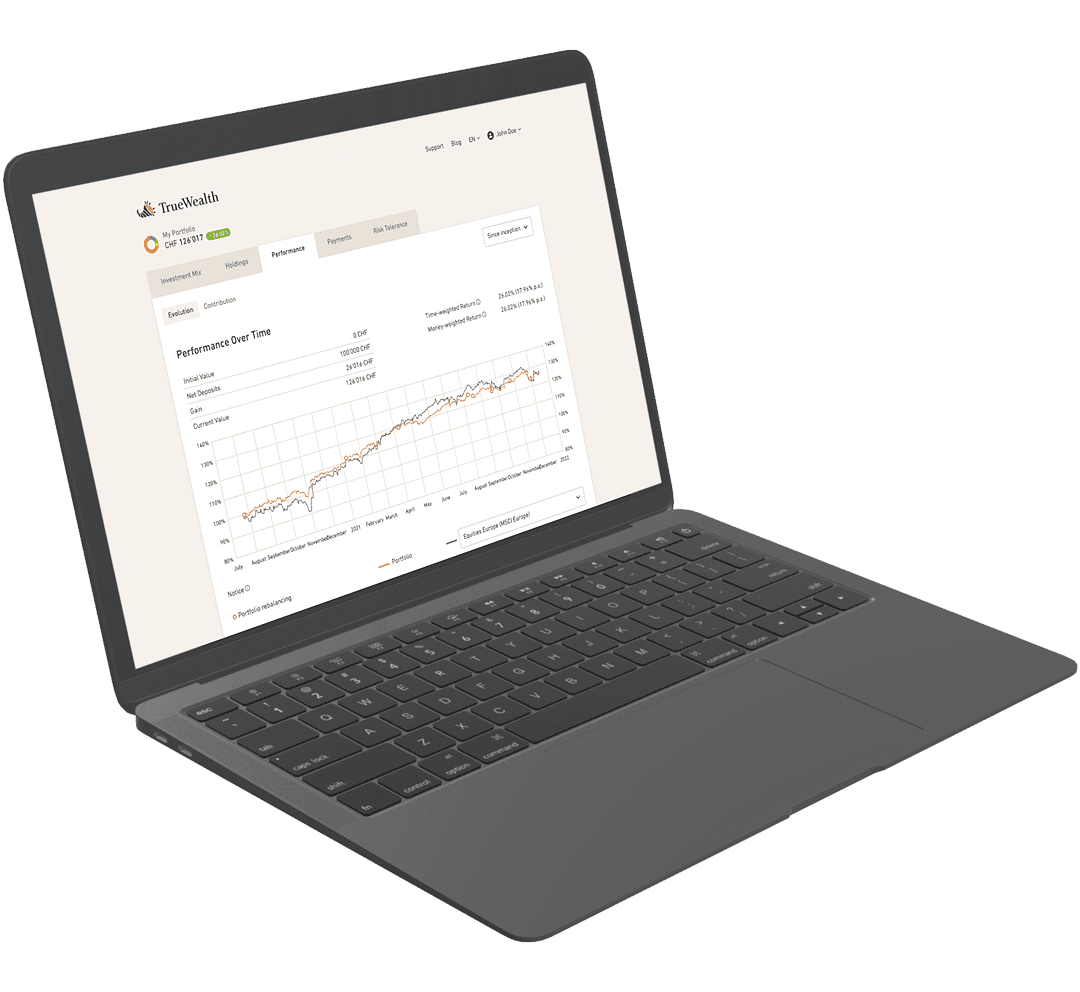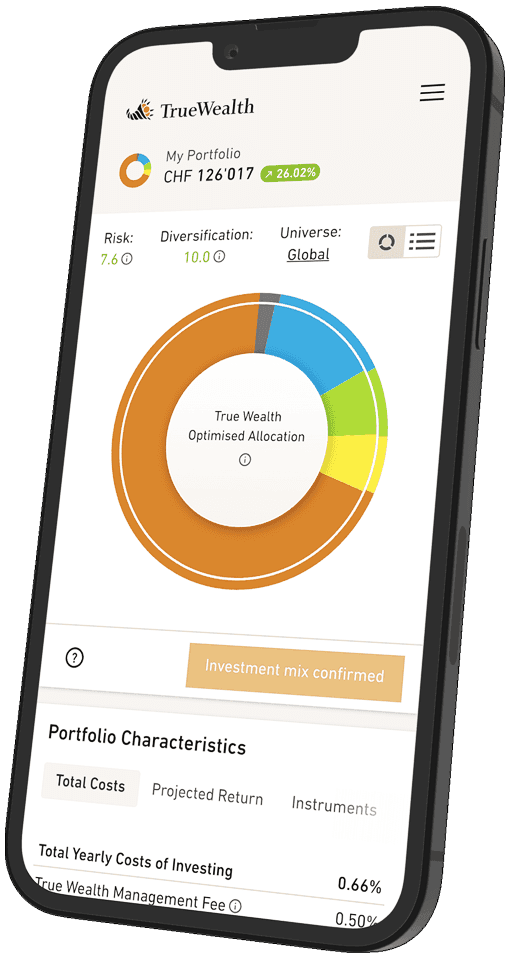Why does my portfolio return differ from the multi-asset benchmark?
The multi-asset benchmark in our app is composed of capital market indices from renowned stock exchanges and financial data providers.
The aim of the multi-asset benchmark is to compare your portfolio return with a theoretical return based solely on your investment strategy. But why does my portfolio return still differ from the multi-asset benchmark?
To answer this question, you first need to understand how all capital market indices work, including the SMI, SPI, S&P 500, and MSCI indices: Capital market indices, including the multi-asset benchmark, are based on highly idealized assumptions – this is intentional, as it allows them to be compared with one another. In practice, a portfolio invested with real money will therefore always deviate from the benchmark; as a rule, the theoretical return is slightly better than the actual return. There are several reasons for this:
Explicit implementation costs
In practice, fees and friction costs always arise when implementing an investment strategy: wealth management fees, administrative costs of the investment instruments (TER), stamp duties.
Brokerage fees should also be mentioned, but these are included in our management fee. Please note that we do not charge any management fees or brokerage fees on Pillar 3a accounts.
Implicit friction costs
In addition, implicit costs must always be taken into account. Implicit friction costs include bid-ask spreads and slippage. The bid-ask spread arises from the fact that, at any given time on any given exchange, the price for buying a security (including ETFs) is always slightly higher than the price for selling the same security. The same applies to currencies, even if they are not traded on exchanges but on the interbank market.
Slippage is related to the bid-ask spread and describes the effect that arises when transactions cannot always be executed at the price specified in the order (or the prices set by the market makers), e.g., when the market moves against you during the execution of the transaction.
Source and withholding taxes
Another difference in the return between the capital market index and the real return lies in the consideration of source and withholding taxes: Most indices for bond markets are based on the gross return (gross total return) and do not take into account source and withholding taxes (net total return).
The multi-asset benchmark takes these costs into account when implementing the investment strategy by using imputed costs (these can be switched on and off).
In individual cases, however, these implementation costs may also be higher. This is because even though brokerage fees are included in our wealth management fee, any change in the investment strategy incurs friction costs. If you have frequently changed your investment strategy in the past (which we do not recommend, as systematic market timing is rarely successful) or have made very frequent large deposits and withdrawals, this may lead to a reduction in returns. Making this transparent is one of the goals of the multi-asset benchmark.
Time lag
The stock exchanges are closed on weekends and public holidays. For other reasons, it can sometimes take a few days for us to fully invest or reallocate your portfolio when you make deposits or withdrawals or change your strategy. However, in the multi-asset benchmark, all deposits, withdrawals, and strategy changes are reflected at the end of the day without delay. If the capital markets move significantly during this period, this will therefore lead to a positive or negative deviation.
Level of precision of the capital market indices used
We strive to use indices for the multi-asset benchmark that reflect the investment instruments used as accurately as possible.
Nevertheless, the indices used in the multi-asset benchmark may differ in the weighting of securities from the benchmarks that underlie our investment instruments or have underlain them in the past.
For example, individual investment instruments (ETFs, index funds) impose certain limits at the level of individual equity or bond issuers for risk limitation reasons or due to regulatory requirements (UCITS). In the case of sustainable investment instruments, there is no generally accepted system for index construction, and individual ETFs or index funds may have made minor adjustments to their benchmarks or security weightings during their existence.
This leads to positive or negative deviations between the portfolio and the benchmark.
More questions in "Investment process"
Can’t find what you’re looking for?
Contact us
Ready to invest?
Open accountNot sure how to start? Open a test account and upgrade to a full account later.
Open test account